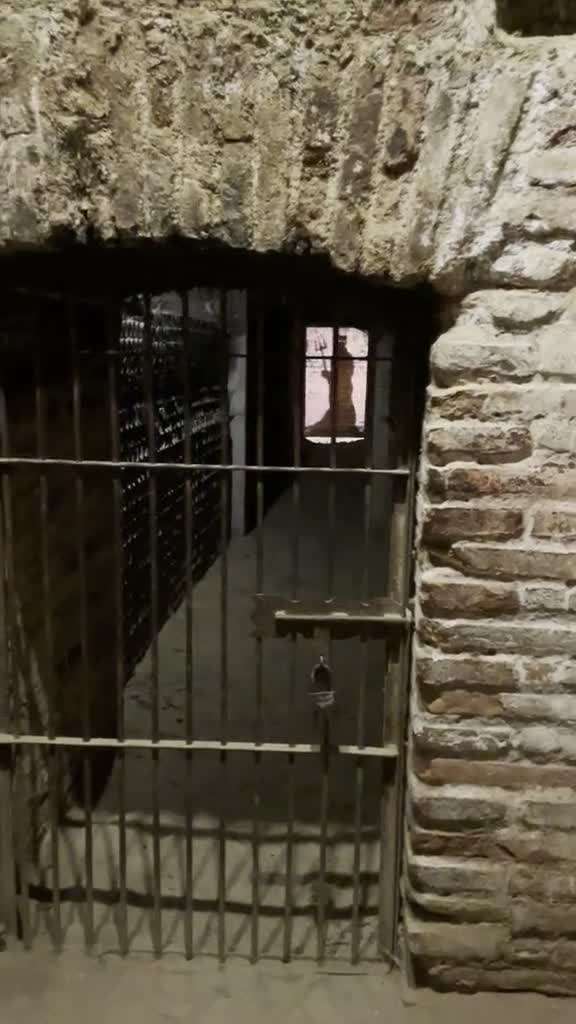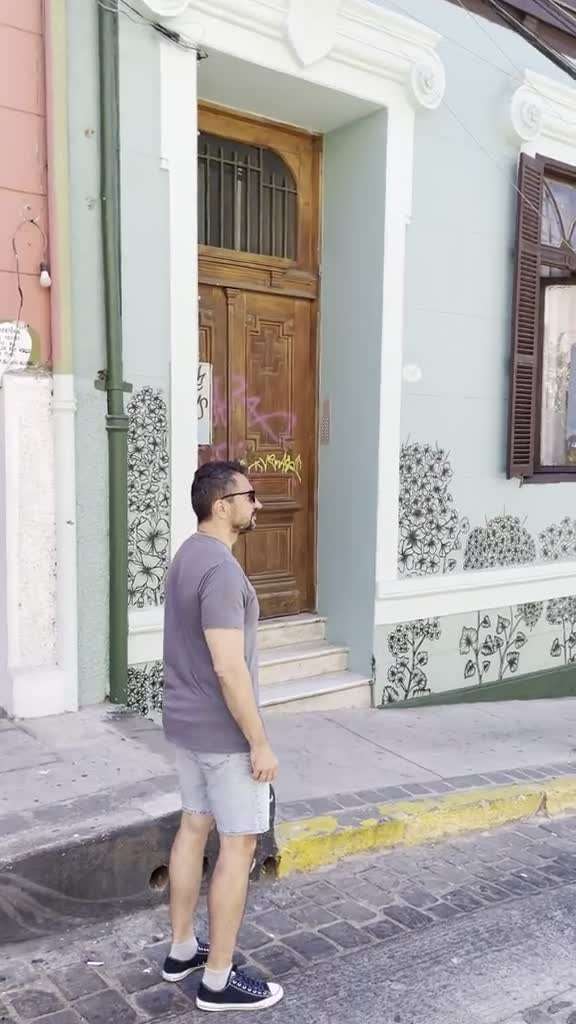 Mar Del Plata
Mar Del Plata
Removed from Unnamed collection
Removed from Unnamed collection
Juan Carlos Castagnino Municipal Art Museum 
Back in the summer of 1980, the charming summer residence of the distinguished Ortíz Basualdo family found new life as the Juan Carlos Castagnino Municipal Art Museum. Nestled on the picturesque Stella Maris hill, this historic gem is now a cherished
Map
Removed from Unnamed collection
Aquasol Water Park 
The Aquasol Aquatic Resort is a sprawling destination, capable of hosting nearly 5,000 visitors, and it brims with a variety of aquatic and recreational activities. Imagine gliding down gigantic water slides or enjoying the thrill of a wave pool. The
Map
Removed from Unnamed collection
Arenas Blancas 
Nestled at the southern edge of the Mar del Plata nature reserve, Arenas Blancas offers an unbeatable setting for both relaxation and excitement. With its private access, the resort ensures convenient parking close to all the amenities. Inside, you'l
Map
Explore more places related to this search:
Removed from Unnamed collection
Caminito 
Nestled in the vibrant neighborhood of La Boca, the Caminito is a street museum that feels like a living canvas bursting with color. This charming little path, as its name translates from Spanish, showcases the vividly painted houses that tell the st
Map
Removed from Unnamed collection
Lezama Park Museum 
Behind the doors of the National Historical Museum in San Telmo, captivating stories are just waiting to be discovered. This museum is a true gem in the heart of Argentina's Federal District. It not only chronicles the significant events that shaped
Map
Removed from Unnamed collection
Casa Rosada 
Commanding attention in the heart of Buenos Aires, the Casa Rosada, affectionately known as the Pink House, stands as the powerhouse of Argentina's national government. This iconic building is where the president's office is located. It's hard to mis
Map
Removed from Unnamed collection
Plaza de Mayo 
The Plaza de Mayo is like stepping into the pages of Buenos Aires' rich history. As the city's oldest public square, it has witnessed countless pivotal moments, from its second founding in 1580 to the fervent cries for independence and the passionate
Map
Removed from Unnamed collection
Obelisco de Buenos Aires 
The legendary Obelisco de Buenos Aires proudly stands at the crossroads of two of the city's most significant streets: Avenida Corrientes and Avenida 9 de Julio, renowned as the widest street in the world with an astonishing 16 lanes. This remarkable
Map
Removed from Unnamed collection
Teatro Colon 
The Colón Theatre stands proudly among the world's finest opera houses, sharing the spotlight with La Scala in Milan, the Opera Garnier in Paris, and London's Royal Opera House. It's celebrated for both its remarkable acoustics and stunning architect
Map
Removed from Unnamed collection
El Ateneo Grand Splendid 
According to The Guardian, a respected British newspaper, El Ateneo Grand Splendid is hailed as the second-best bookstore in the world. It beautifully maintains the grandeur and sophistication of its past life as the Gran Splendid theater and cinema,
Map
Removed from Unnamed collection
National Museum of Fine Arts 
Nestled in the charming Recoleta neighborhood, the National Museum of Fine Arts stands as a must-visit for art lovers exploring Latin America. This cultural treasure trove boasts the largest collection of Argentine art and some of the finest pieces i
Map
Removed from Unnamed collection
Museum of Latin American Art 
The Museum of Latin American Art (MALBA) is a treasure trove of creativity, housing the Fundación Costantini collection. With over 400 masterpieces from influential 20th-century Latin American artists, it's a must-see for art enthusiasts. The museum
Map
Removed from Unnamed collection
The Palermo Rose Garden 
Nestled within the charming Palermo neighborhood, Parque Tres de Febrero is a must-visit spot in the city. Among its lush landscapes, you'll find a breathtaking collection of over 18,000 roses, beautifully framed by a serene lake and sprawling acres
Map
Removed from Unnamed collection
National Monument to the Flag 
Nestled along the banks of the Paraná River, the city of Rosario holds a piece of Argentina's heart and history. It's here where Manuel Belgrano first hoisted the National Flag on February 27, 1872, a moment that rippled through national consciousnes
Map
Removed from Unnamed collection
Juan B. Castagnino Municipal Museum of Fine Arts 
Nestled along the edge of Parque Independencia on Pellegrini Avenue, the Juan B. Castagnino Museum of Fine Arts stands as a beacon of cultural significance right in the heart of Argentina. This museum, established in 1936, was a marvel of modern arch
Map
Removed from Unnamed collection
Parana River 
The Paraná River, a marvel in its own right, ranks among the fastest and longest rivers globally. It winds its way between towering cliffs, creating a dramatic landscape that's nothing short of breathtaking. As you head north from Rosario, the river
Map
Removed from Unnamed collection
San Felipe Wine Museum - La Rural Winery 
Back in 1945, Mr. Francisco Rutini, the eldest son of Mr. Felipe Rutini, had a brilliant idea. He envisioned a museum that would showcase the rich history of wine in Mendoza. Nestled inside the La Rural winery, this museum is a treasure trove for any
Map
Removed from Unnamed collection
The Cathedral of Our Lady of Loreto 
Nestled right across from Plaza Sarmiento, between Moreno and Lavalle streets, lies the charming Cathedral of Our Lady of Loreto. This historical gem stands as one of the oldest cathedrals in the city and still proudly showcases its original architec
Map
Removed from Unnamed collection
Los Penitentes 
Nestled 187 kilometers northwest of Mendoza city on International Route Nº 7, Los Penitentes is a winter wonderland waiting to be explored. Whether you're into Nordic skiing, alpine skiing, competitive skiing, or snowboarding, this resort has somethi
Map
Removed from Unnamed collection
Copahue and its Hot Spring Center 
Nestled in Northern Neuquén, Copahue is a thermal wonderland where the ancient forces of nature have crafted an extraordinary retreat. It's a place where the legendary Copahue Volcano plays a starring role, lending its geothermal magic to the renowne
Map
Removed from Unnamed collection
The Lanin Volcano 
Climbing Lanín Volcano is an adventure that promises to test your endurance and thrill your senses. Before you even think about reaching the summit, there are a few essentials to consider: weather conditions, appropriate clothing, reliable mountain g
Map
Removed from Unnamed collection
Los Arrayanes National Park 
Nestled in the Southeast of the Quetrihué Peninsula, you'll discover the natural wonder of Los Arrayanes National Park. This stunning location graces the shores of Lake Nahuel Huapi, where about 12 hectares are home to magnificent giant myrtaceous bu
Map
Removed from Unnamed collection
Casillero del Diablo winery 
20 January 2025
That was my birthday and we spent more than half of this day at the Casillero del Diablo winery in Santiago ... drinking wine and having a great time! What else would you want to do on your birthday? 😀 Casillero del Diablo is the largest winery in Sa
Map
Removed from Unnamed collection
Museo a Cielo Abierto 
If you're a street art enthusiast, Santiago's Museo a Cielo Abierto in the San Miguel neighborhood is a must-see. This open-air museum boasts dozens of gigantic murals that transform the urban landscape into a vibrant canvas. It's a perfect spot for
Map
Removed from Unnamed collection
Cementerio General de Santiago 
Named one of the World’s Most Scenic Cemeteries by CNN, Santiago’s sprawling Cementerio General is absolutely worth a visit. Covering a vast 210 acres (85 hectares) just north of the city center in the Recoleta neighborhood, this lavish and expansive
Map
Removed from Unnamed collection
Quinta Vergara 
In the early 19th century, the land was owned by Juan Antonio de la Carrera and his wife. They later sold it in 1840 to Francisco Salvador Alvarez, a Portuguese merchant with an eye for opportunity. It was here that Alvarez constructed his home, turn
Map
Removed from Unnamed collection
Wulff Castle 
In 1881, Mr. Gustavo Wulff, a German trader dealing in saltpeter and coal, as well as a maritime transporter, decided to make Chile his new home. Fast forward to 1904, and he purchased a 1,260-square-meter plot from Dr. Teodoro Von Schoeders, right i
Map
Removed from Unnamed collection
Renaca Beach 
If you're craving a mix of parties, bohemian vibes, and sun-soaked beaches, Reñaca is the perfect summer destination for you. This lively spot on the Chilean coast is buzzing with energy, offering everything from thrilling outdoor adventures to delig
Map
Removed from Unnamed collection
Valparaiso. Chilean pacific coast. 
22 January 2025
Testing link font to ensure everything is correct
Map
Removed from Unnamed collection
Palafitos de Chiloe 
Nestled among rolling hills and lush greenery, this charming city warmly invites you to take a leisurely stroll through its scenic streets. Treat your taste buds to the delights of its seafood restaurants, where the catch of the day is always fresh a
Map
Removed from Unnamed collection
Modern Art Museum 
Nestled in the heart of Chiloé Island, the Modern Art Museum in Castro is a hidden gem that champions contemporary Chilean art. Just 1,200 kilometers from Santiago, this vibrant cultural hub sits within the municipal park, offering a lush setting tha
Map
Removed from Unnamed collection
Chiloe National Park 
Chiloé National Park is a lush paradise, where the Valdivian rainforest reigns supreme. Picture dense woods filled with towering trees, evergreen wonders, shrubs, and tangling climbing plants. The landscape is a symphony of green, but it's not just a
Map
Removed from Unnamed collection
Praia da Enseada Guarujá 
Na Praia da Enseada em Guarujá você vai encontrar uma excelente infraestrutura, além de muita diversão, um mar límpido de boas ondas, com areia branca e fininha.Conta com uma orla incrível e uma ciclovia tranquila para pedalar que se estende por seus
Map
Removed from Unnamed collection
Embu das Artes Fair 
Nestled just 27 kilometers from São Paulo, Embu das Artes is a charming little town bursting with culture. With fewer than 300,000 residents, this place is like a living gallery, and it has a rich history of attracting prominent artists like Brazilia
Map
Removed from Unnamed collection
Praia do Éden em Guarujá 
Vista como uma das mais belas Praias do Guarujá, a Praia de Éden é um encanto de uma natureza exuberante e incrível.Com aproximadamente 150 mts de extensão a Praia do Éden é cercada por uma mata Atlântica linda e muito preservada, um verdadeiro redut
Map






































